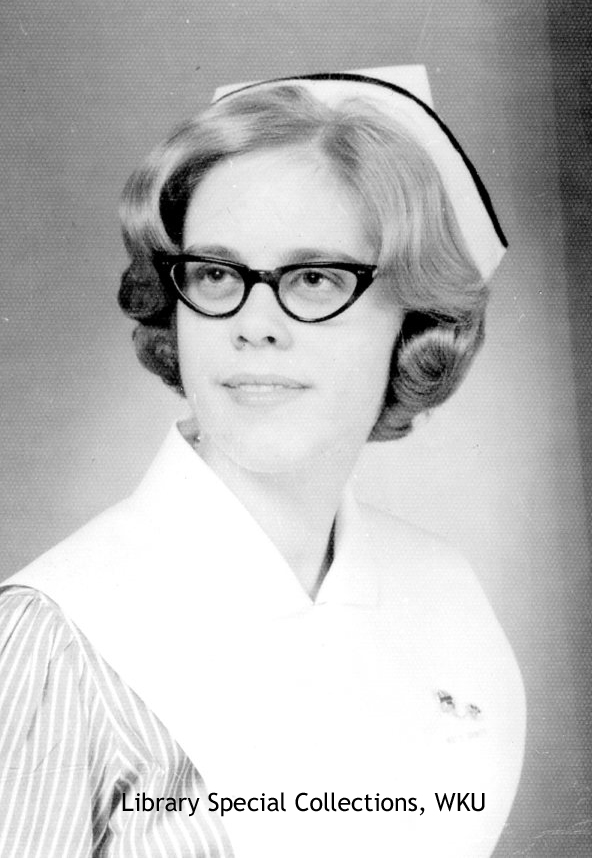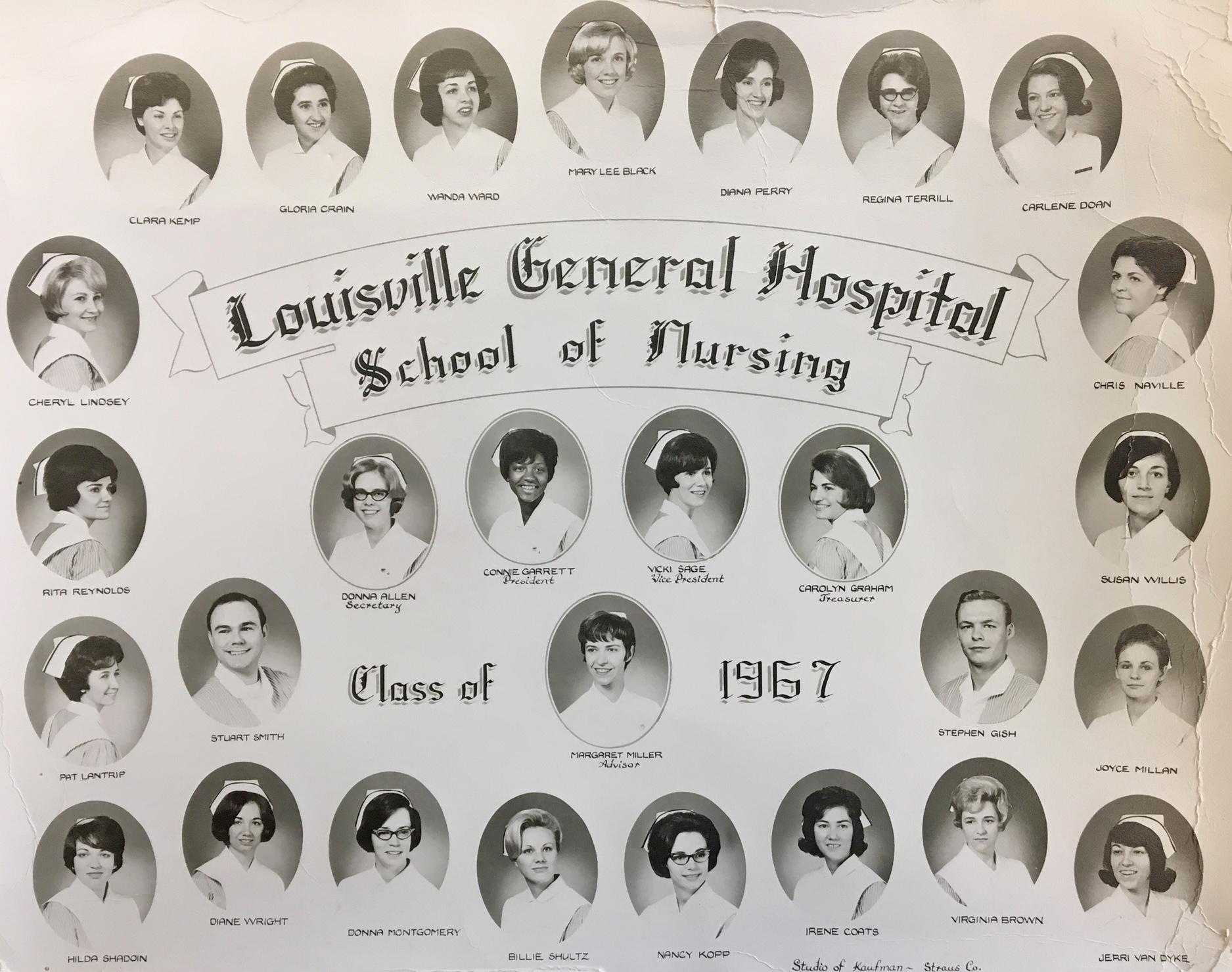
It’s National Nurses Week! Here’s a blog highlighting one of our most recent acquisitions documenting the making of a Kentucky nurse. And below are a few more glimpses into our collections that tell of the trials and tribulations of these essential health care professionals.
On her inaugural shift as a nursing student in 1913, Elizabeth (Cherry) McCallum recalled that “I entered, my first day, in pink probationer’s uniform on an empty 25-bed ward which had just been fumigated after an outbreak of diptheria.” She was shown how to make the beds and scrub all the white iron frames with Bon Ami. When she was done, her instructor returned “and without saying a word to me, she tore apart all 25 beds I had made. She showed me again, and this time the lesson sunk in.”
For $5.00 per month plus room, board, laundry and instruction, Elizabeth endured a gruelling and highly unspecialized routine. On any given day, she might leave her morning classes to prepare trays in the kitchen, feed a premature infant with a medicine dropper and warm her with a hot-water bottle, or delouse the head of a Kentucky mountain child brought in for treatment of a hernia, cleft palate, or intestinal parasites. Over her long career, however, which included service in France as a Red Cross nurse during World War I, Elizabeth saw many changes, not only in the quality of medical care but in the enhanced collegiality between doctors and nurses—“how much more skillfully they perform their tasks together.”
Some 20 years after Elizabeth, Eleanor Bowles of Lucas, Kentucky and her friend Mollye were trying to decide what to do with their lives after graduating from high school. Both eyed nursing as a career. “About the occupation, I’ve been looking around. I think the City Hospital at Louisville offers the best opportunities of any,” wrote Mollye. She reported the entry requirements to her friend. Prospective nursing students had to be 18-35 (preferably on the low end of that scale), in the top third of their high school class, and never married—not even widows or divorcees were eligible. The successful applicant received “uniforms, books and cape,” as well as room and board in a building connected to the hospital by a tunnel. And one more thing, advised Mollye: “I forgot to tell you that you have to have your tonsils removed.” So if they could each scrape together the entrance fee of $50 plus another $30 for tonsillectomies, she calculated, they could be on their way. “I’ll be waiting for you,” she told Eleanor “so don’t you go & back out.”
Eleanor didn’t heed the warning, but she didn’t exactly back out. Instead, she got her R.N. at Mt. Sinai Hospital School of Nursing in Baltimore. (We don’t know if her tonsils made it through or not).
Click on the links to access finding aids for these collections in the Manuscripts & Folklife Archives of WKU’s Department of Library Special Collections. For more, search TopSCHOLAR and KenCat.


